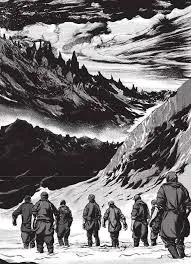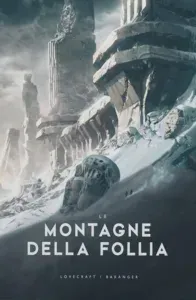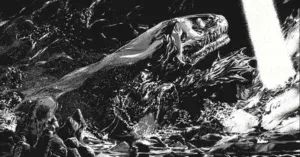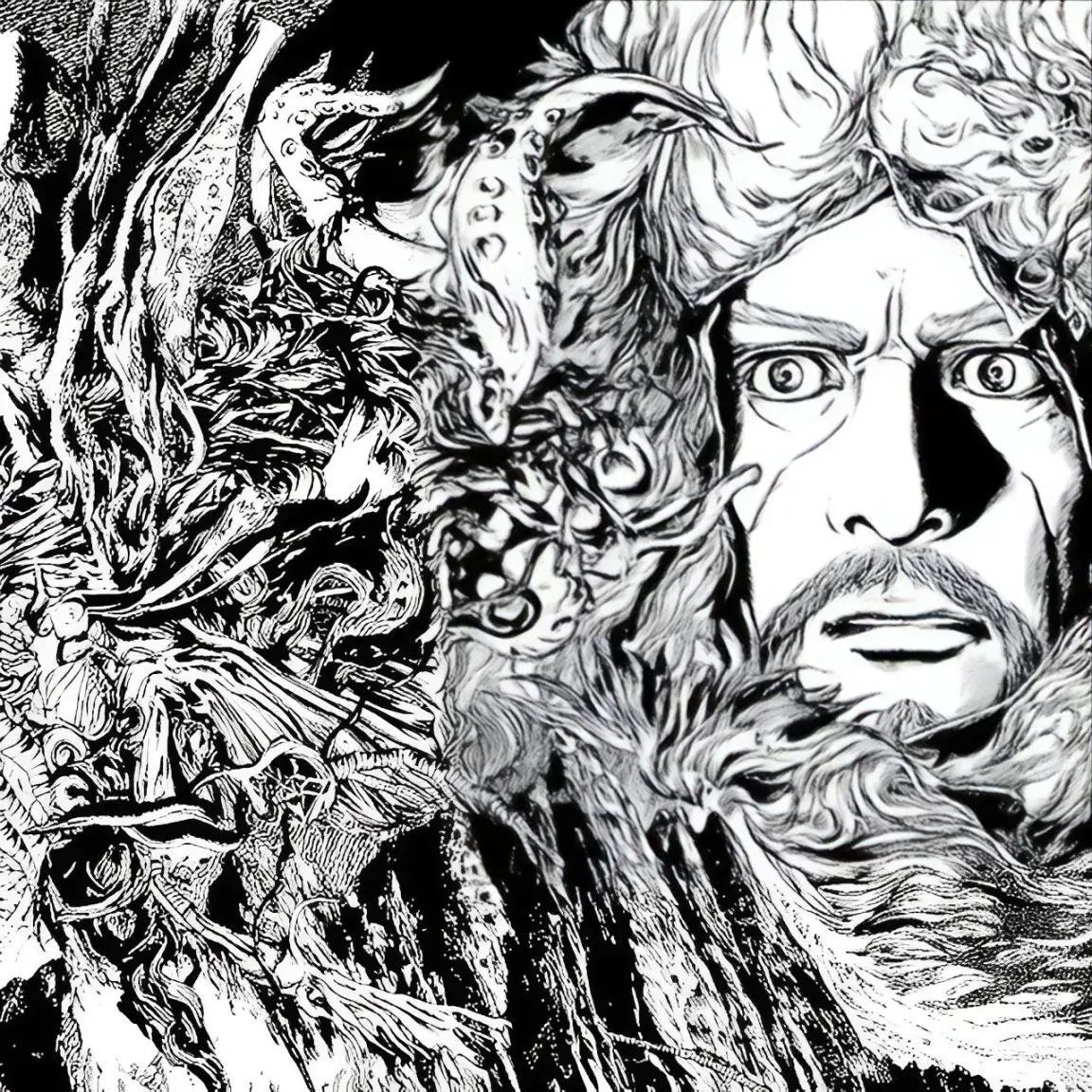At the Mountains of Madness
 “At the Mountains of Madness” by Gou Tanabe is a manga adaptation of the novel of the same name by H.P. Lovecraft, one of the most celebrated and terrifying works by the Providence author. Tanabe, known for his ability to bring Lovecraft’s disturbing and mysterious atmospheres to paper, manages to convey that sense of unease and terror that characterizes the author’s narrative, transforming words into images that seem to emerge from alien nightmares. Adapting Lovecraft into a comic is a risky choice, but Tanabe proves he’s more than up to the challenge, offering a visual experience that amplifies the original cosmic horror.
“At the Mountains of Madness” by Gou Tanabe is a manga adaptation of the novel of the same name by H.P. Lovecraft, one of the most celebrated and terrifying works by the Providence author. Tanabe, known for his ability to bring Lovecraft’s disturbing and mysterious atmospheres to paper, manages to convey that sense of unease and terror that characterizes the author’s narrative, transforming words into images that seem to emerge from alien nightmares. Adapting Lovecraft into a comic is a risky choice, but Tanabe proves he’s more than up to the challenge, offering a visual experience that amplifies the original cosmic horror.
 The story follows the Antarctic expedition of Miskatonic University, a group of explorers and scientists determined to uncover the hidden secrets in the most remote and unexplored lands of the planet. What begins as a scientific journey quickly transforms into an indescribable nightmare when the expedition encounters the remnants of an ancient alien civilization and its unsettling secrets. Lovecraft uses Antarctica as a symbol of cosmic emptiness and the unknown, and Tanabe captures this concept with illustrations that highlight the desolation and freezing infinity of these remote places, adding layers of dread and tension to each page.
The story follows the Antarctic expedition of Miskatonic University, a group of explorers and scientists determined to uncover the hidden secrets in the most remote and unexplored lands of the planet. What begins as a scientific journey quickly transforms into an indescribable nightmare when the expedition encounters the remnants of an ancient alien civilization and its unsettling secrets. Lovecraft uses Antarctica as a symbol of cosmic emptiness and the unknown, and Tanabe captures this concept with illustrations that highlight the desolation and freezing infinity of these remote places, adding layers of dread and tension to each page.
 One of the most impressive aspects of this adaptation is Tanabe’s ability to stay true to the essence of Lovecraftian storytelling without sacrificing artistic quality. Each panel is a work of art in itself: the meticulous details and mastery of chiaroscuro provide a sense of depth and menace that permeates the entire comic. The creatures described by Lovecraft, often only vaguely hinted at or left to the imagination, come to life here in ways that are both faithful and creatively disturbing, enhancing the story’s visual and psychological impact.
One of the most impressive aspects of this adaptation is Tanabe’s ability to stay true to the essence of Lovecraftian storytelling without sacrificing artistic quality. Each panel is a work of art in itself: the meticulous details and mastery of chiaroscuro provide a sense of depth and menace that permeates the entire comic. The creatures described by Lovecraft, often only vaguely hinted at or left to the imagination, come to life here in ways that are both faithful and creatively disturbing, enhancing the story’s visual and psychological impact.
The narrative maintains the complexity and ambiguity typical of Lovecraft, taking the reader on a journey that is as much physical as it is psychological. The unfolding revelations do not offer reassuring answers; rather, they amplify the horror of the unknown. Tanabe’s choice not to add explanations or simplify the plot respects Lovecraft’s original intention: to immerse the reader in a reality where humanity is insignificant in the face of cosmic forces. In this sense, the manga succeeds as both a tribute and a standalone, powerful experience.
 Despite the visual quality, *At the Mountains of Madness* may be challenging for those unfamiliar with Lovecraft’s style. The dense narrative and cryptic language can make it hard to follow the plot, and the comic, while visually stimulating, does not simplify the experience for those hoping for clear answers. Tanabe relies on the power of images to suggest horror, leaving the reader to interpret what they see and fill in the gaps, preserving the essence of original cosmic horror.
Despite the visual quality, *At the Mountains of Madness* may be challenging for those unfamiliar with Lovecraft’s style. The dense narrative and cryptic language can make it hard to follow the plot, and the comic, while visually stimulating, does not simplify the experience for those hoping for clear answers. Tanabe relies on the power of images to suggest horror, leaving the reader to interpret what they see and fill in the gaps, preserving the essence of original cosmic horror.
 Ultimately, Gou Tanabe’s *At the Mountains of Madness* is an adaptation that shines for its faithfulness and artistic mastery. It’s a must-read for Lovecraft fans and for those looking for a visual experience that conveys horror and wonder with each panel. However, it is also a read that requires some commitment and a willingness to be overwhelmed by the unknown and the inexplicable. Tanabe manages to make the indescribable tangible, earning a place of honor among Lovecraft’s adapters.
Ultimately, Gou Tanabe’s *At the Mountains of Madness* is an adaptation that shines for its faithfulness and artistic mastery. It’s a must-read for Lovecraft fans and for those looking for a visual experience that conveys horror and wonder with each panel. However, it is also a read that requires some commitment and a willingness to be overwhelmed by the unknown and the inexplicable. Tanabe manages to make the indescribable tangible, earning a place of honor among Lovecraft’s adapters.
 Subscribe to our YouTube channel
Subscribe to our YouTube channel






